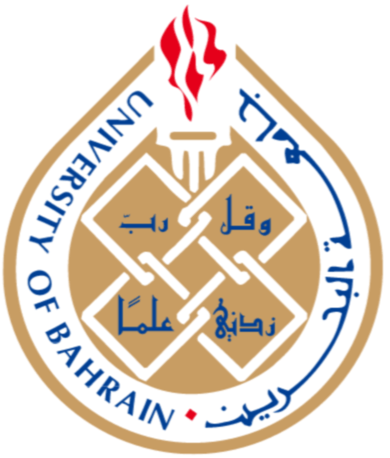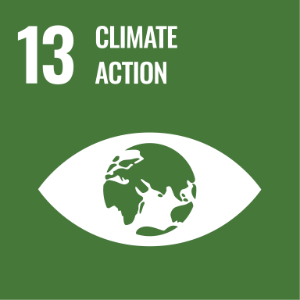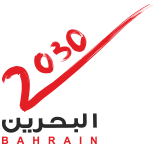Operations and Institutional Arrangement
SDG 13: Focus Areas
13.2.1 Indicator: Low-carbon energy tracking
13.2.2 Indicator: Low-carbon energy use
Low-Carbon Energy Use and Carbon Footprint Assessment (Scopes 1 & 2)
The University of Bahrain is committed to measuring and enhancing the use of low-carbon energy sources on campus as part of its broader sustainability goals. This effort involves assessing and quantifying the total energy generated from renewable sources, such as: solar power, tracking annual electricity consumption, and calculating the University’s carbon footprint relative to its campus population. These data provide a clear indication of the University’s contribution to reducing overall energy-related emissions.
Within the Sakhir Campus, the primary sources of emissions are transportation (Scope 1) and electricity consumption (Scope 2). To minimize transportation-related emissions, the University provides free shuttle services to transport students and staff between buildings, colleges, and parking areas. Shuttle services are also available for students with special needs. The emissions associated with the on-campus bus fleet are included in the Scope 1 calculations.
Electricity consumption represents Scope 2 emissions and accounts for the total energy used across all Sakhir Campus facilities throughout the year. Energy use data are derived from the official electricity bills issued by the Electricity and Water Authority of Bahrain. In 2024, the Sakhir Campus recorded an annual electricity consumption of 47,047,107 kWh, primarily used for laboratory equipment, lighting, and cooling across academic and administrative buildings.
SDG 13.2: Integrate climate change measures into policies and planning
By actively monitoring carbon emissions, promoting low-carbon energy use, and implementing renewable energy initiatives, the University integrates climate action into institutional policies and campus operations.
Relevant SDG 13 Targets and Indicators:
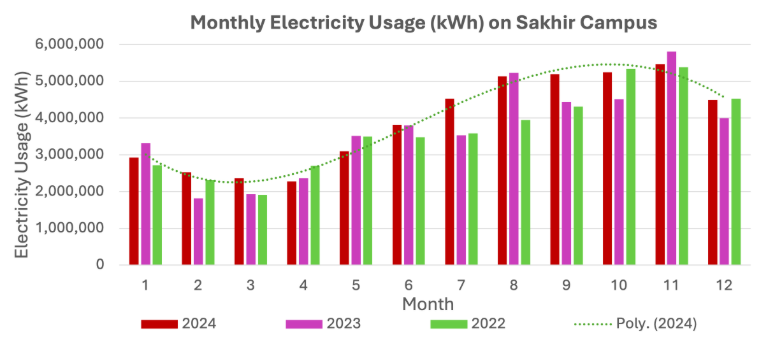
Monthly Electricity Consumption (kWh) (University of Bahrain Main Campus, Bahrain)
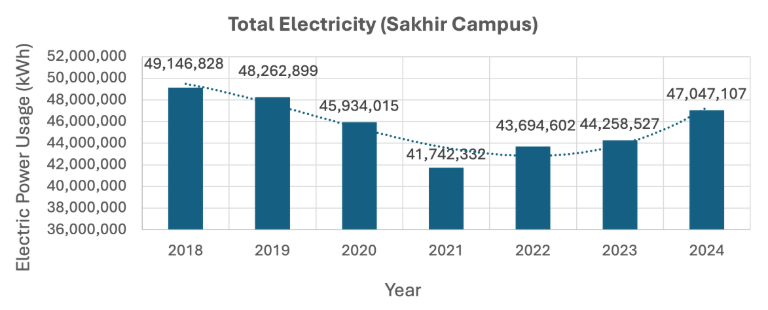
Annual Electricity Consumption in 2018-2024 (University of Bahrain Main Campus, Bahrain)
- A 6.3% increase in electrical energy usage was recorded in 2024 compared to 2023. However, the electricity used in 2024 was still lower than that in 2019 (pre-CODID-19) by 2.5%.
- Considering the university population (27,700 students + 1,300 staff) to be ~29,000, the electricity usage is 1,622 kWh/person.
Electricity Consumption and Carbon Footprint (2024)
Carbon estimation was conducted based on The Greenhouse Gas Protocol.
Scope 1: Transportation
The emissions from the university bus fleet are 875.93 tons of CO₂ equivalent.
Scope 2: Electricity
The energy consumption of the year 2024 was directly sourced from the electricity bills produced by Electricity and Water Authority in Bahrain. The total electricity for the Sakhir campus in 2024 was 48,991,978 kWh.
The emissions resulted from the total electricity consumption in Sakhir campus are 23,272.69 tons CO₂ equivalent. Total emissions from Scope 1 and Scope 2 in 2024 = 24,148.62 tons CO₂ equivalent. Most of the emission is attributed to electricity consumption (96.37%).

Electricity consumption (kWh) table.
Table 1. Contribution of Emissions from Transportation and Electricity Consumption
| Scope | Source | Emissions (t CO₂ e) | Contribution % |
|---|---|---|---|
| 1 | Shuttles | 875.93 | 3.63 |
| 2 | Electricity | 23,272.69 | 96.37 |
| Total | 24,148.62 | ||
- Carbon footprint per population:
- University population = 29,000
- Carbon footprint per person = 0.84 metric tons/person
Solar Power Plant Project (46.2 MW)
University of Bahrain – Strategic Partnership with the Electricity & Water Authority (EWA)
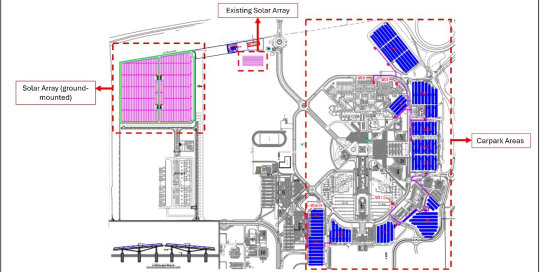
Overview
The University of Bahrain, in collaboration with the Electricity & Water Authority (EWA), is implementing a large-scale 46.2 MWp solar power plant on its Sakhir Campus. The project will generate approximately 70 GWh of clean energy annually, meeting nearly one-third of the university’s electricity demand through renewable sources.
Impact and Contribution
This initiative is expected to reduce the University’s carbon footprint by 35,000 tons of CO₂ annually, marking one of the largest renewable energy projects within the higher education sector in the Kingdom of Bahrain. The project directly supports Bahrain’s National Renewable Energy Plan and national climate goals of 30% emission reduction by 2035 and net-zero carbon emissions by 2060.
Alignment with SDG 13:
The project contributes to:
- Target 13.1: Strengthen resilience and adaptive capacity to climate-related hazards.
- Target 13.2: Integrate climate change measures into institutional policies and planning.
- Target 13.4: Enhance commitment toward carbon neutrality and sustainable energy transition.
Outcome Indicators:
- On-campus renewable energy generation: 70 GWh/year
- Carbon emission reduction: 35,000 tons CO₂/year
- Renewable contribution to campus energy use: ~33%
Evidence and Reference:
- Official partnership with Electricity & Water Authority (EWA)
- Supports Bahrain’s Net-Zero by 2060 commitment
- Project completion expected Q3 2026
Relevant SDG 13 Targets and Indicators:
